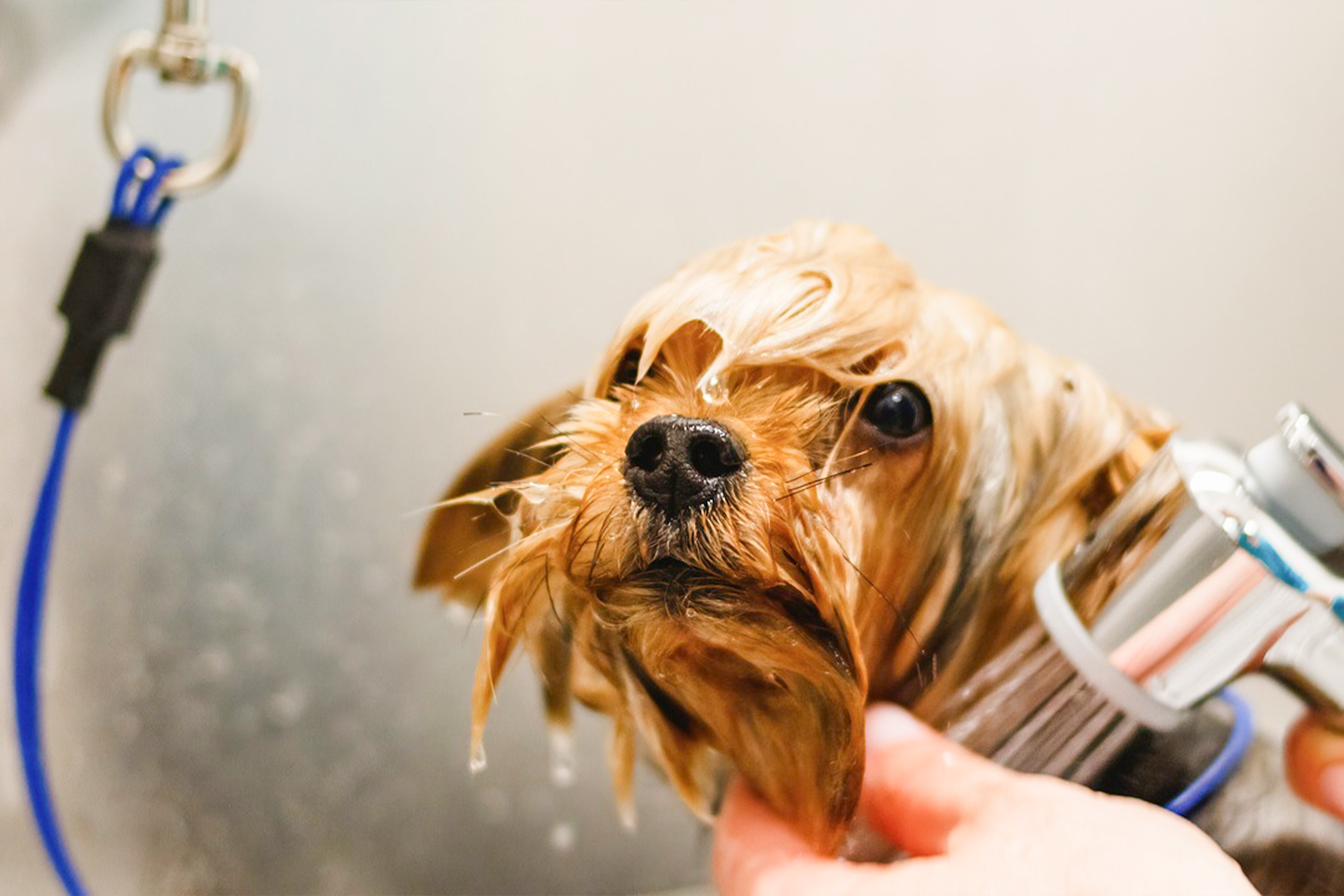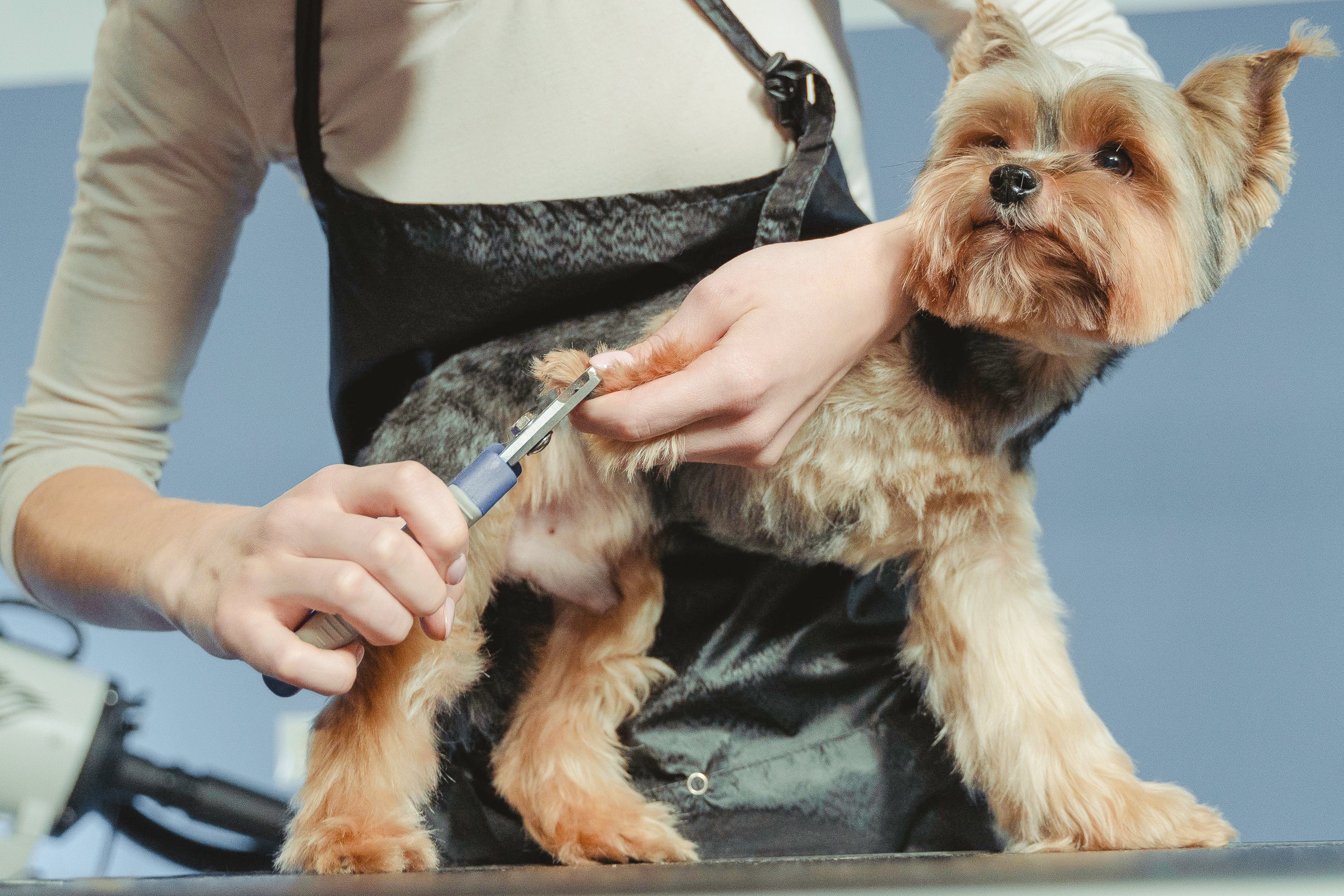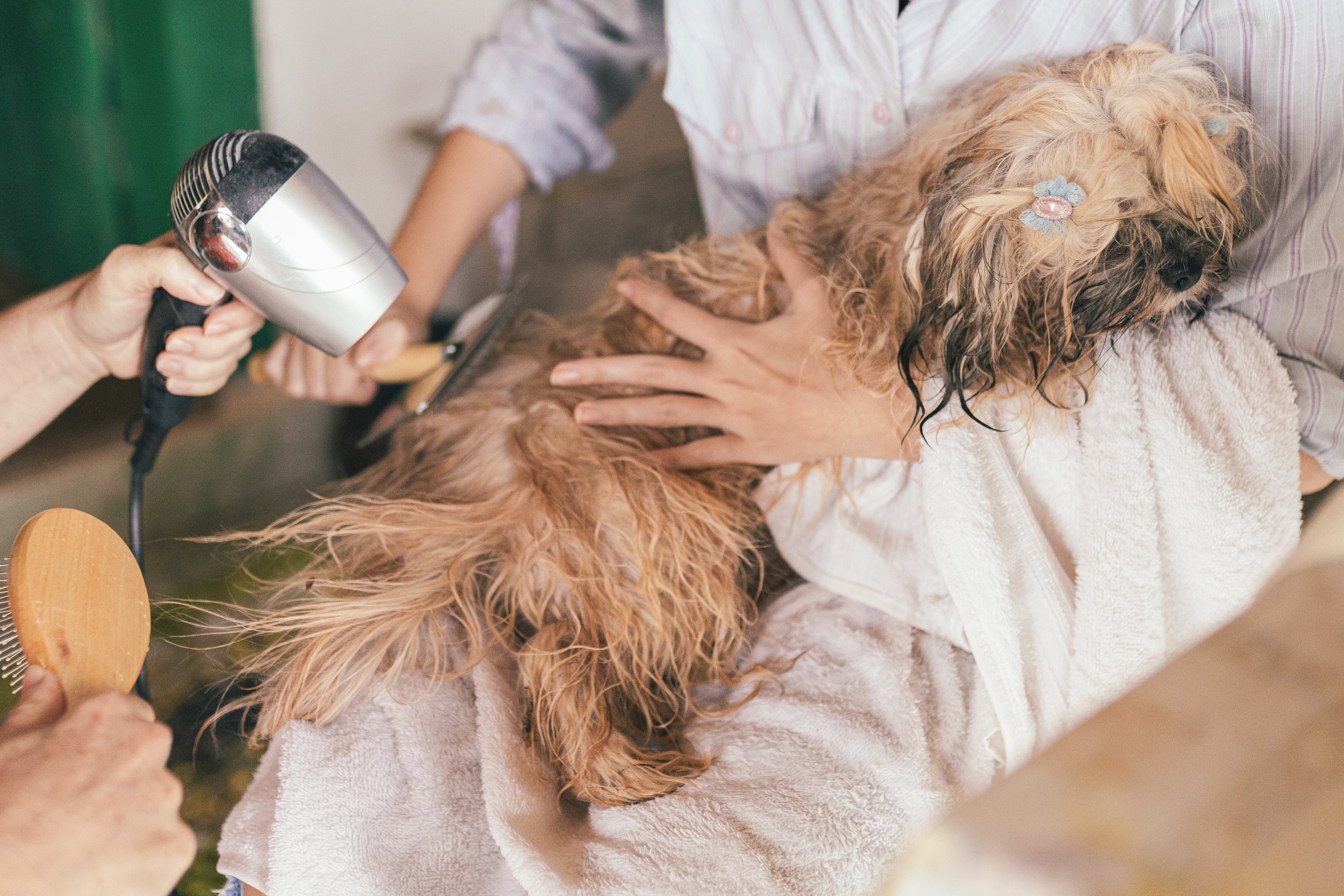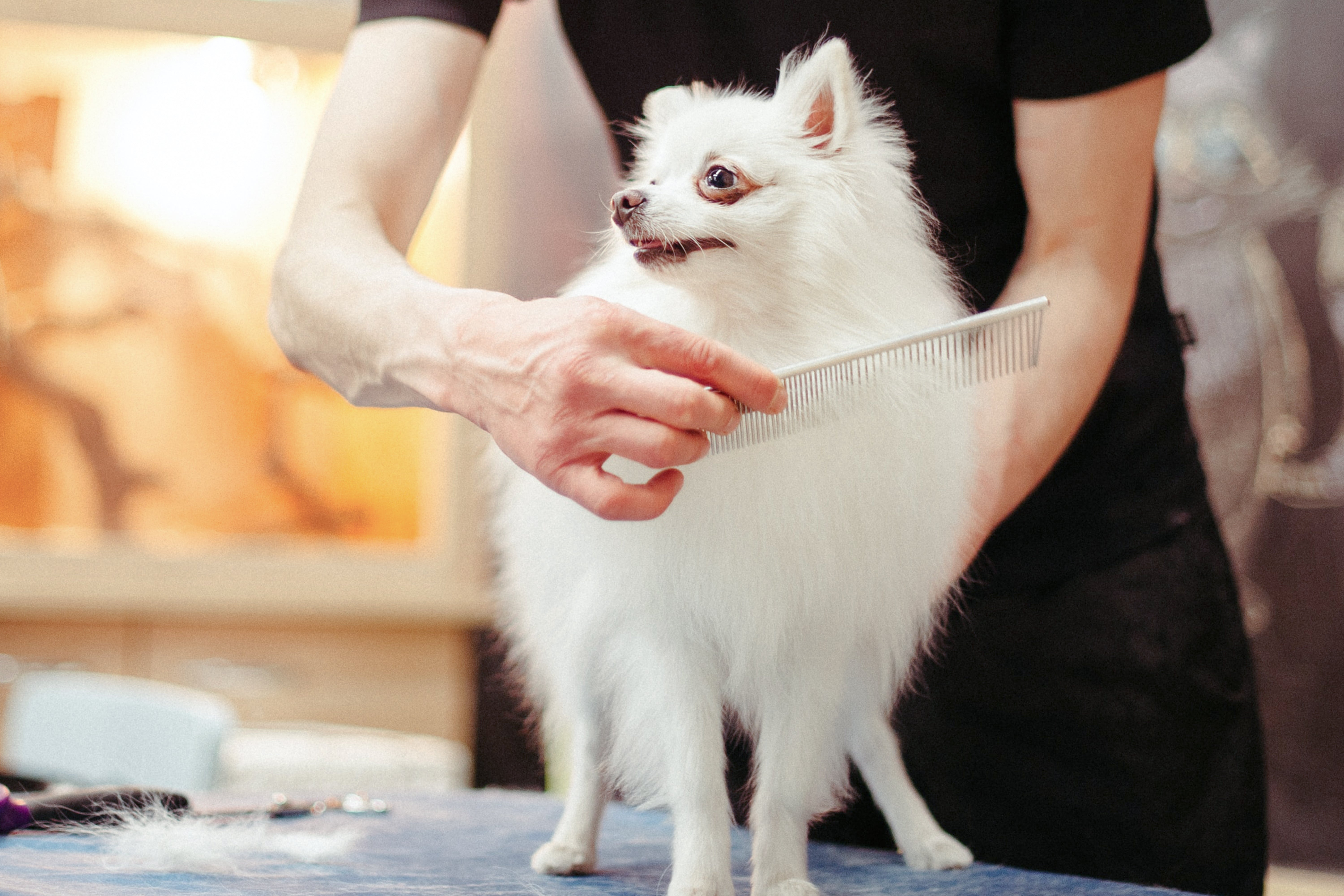G
rooming your dog can seem daunting and may be best left to the professionals. But it doesn't have to be! Any dog can be successfully groomed at home, regardless of size or coat type! Today, we'll discuss everything you need to know about how to groom a dog.
Essential tools for grooming:
So, how do you groom a dog? The first thing you'll need to do is gather your supplies. Here is a list of everything you need to groom your dog successfully.
• Nail clippers
• Ear cleaner
• Comb
• Rubber curry brush
• Slicker brush
• De-shedding brush
• Dog shampoo
• Clippers
• Towels
• Dryer

Different coat types
Dogs come in all different shapes and sizes, but they also have a wide range of types of fur! Understanding your dog's coat type will help you select the right tools to make your pup look beautiful.
Short, smooth coats
Dogs with short and smooth coats don't require as much grooming as dogs with other coat types, but they still require some grooming to keep their coats shiny and smelling good. Dogs with short coats still tend to shed quite a bit and will need regular brushing to help decrease the chances of fur flying around your house. Some dog breeds you might recognize with short coats include Labrador Retrievers, Pugs, Basset Hounds, Rottweilers, and Beagles, to name a few.
Long coats
Dogs with a long coat, sometimes called a drop coat, are typically considered non-shedding, but they require regular brushing to keep their long locks in good shape. Some examples of breeds with long coats include Afghan Hounds, Yorkshire Terriers, Shih Tzus, and Skye Terriers.
Curly, wavy coats
Another typical coat type found among dogs is the curly or wavy coat. These coat types are considered non-shedding. They require regular grooming and frequent brushing to ensure that mats and tangles don't form! Some examples include Poodles, Bichon Frises, Portuguese Water Dogs, and Bouvier Des Flandres.

Double-coats
Double-coated dogs have incredibly thick fur that sheds a lot! Double-coated breeds have two layers of coat. The first layer is a soft undercoat that helps them regulate their body temperature. The second layer of fur is heavy, thick, and sometimes coarse to help further protect these dogs from the elements. Some breeds with double coats include Siberian Huskies, Alaskan Malamutes, German Shepherds, Corgis, Newfoundlands, and Great Pyrenees, to name a few.
Wire-haired coats
Another type of coat you might see on some dogs is the wire-haired coat. Wire-haired coats are, much like it sounds, wiry and coarse or rough to the touch. Dogs with this coat type shed very little and don't require as much brushing as other breeds. Some examples of breeds with wire-haired coats include Brussels Griffons, Affenpinschers, Scottish Terriers, and Irish Terriers.
The full grooming process
If you are looking to give your dog a complete doggie makeover, there are a few steps you'll need to keep in mind. First, we'll go over all the steps that every dog can benefit from, and then we'll discuss the final steps that can vary depending on your dog's coat type.
Nails
One of the first steps of the grooming process is nail care. Dogs need regular nail trims just like their human counterparts. Most groomers recommend that dogs have their nails clipped every two to four weeks. Examine each nail to clip your dog's nails and look for the quick. The quick is the sensitive inner part of the nail that contains blood vessels and nerves.
It's usually visible as a pinkish area within the nail. You'll want to avoid cutting this part as it can be painful for the dog and result in some bleeding. You'll want to cut only a small piece of the nail at a time to avoid the quick.

Ear cleaning
Next, you'll want to clean your dog's ears. Use a dog-friendly ear cleaner and follow the instructions on the bottle. Most suggest applying the cleaning solution to a cotton ball and applying that to the inside of your dog's ear to clean out any dirt.
Teeth brushing
Another essential step in the grooming process is teeth brushing. Invest in a doggie toothbrush and doggie toothpaste. Dog toothpastes are often flavored with beef or chicken to make the process more appealing to your pup.
Bathing
And of course, we can't forget to mention the bath and blow dry! You'll want to invest in a good doggie shampoo. For some coat types, like double coats or curly coats, it may also be beneficial to use a dog conditioner.
Conditioners can help reduce shedding and help loosen any knots or tangles in the fur. You'll also want to ensure you completely dry your dog before moving on to the next step. Some breeds, like short-coated breeds, can be towel-dried, while others may benefit from a dog blow dryer.
Human blow dryers can work, too, but it is crucial to continuously monitor the temperature and use it in a cool setting since they can get too hot very quickly.

Brushing
The next step is brushing! There are tons of different kinds of brushes on the market today, all catering to different types of fur. For a dog with short, smooth hair, a rubber curry brush is an excellent option for removing dead skin and loose fur while adding a nice shine to the coat.
For curly/wavy coats, long coats, and wire coats, a simple comb and a slicker or pin brush will help detangle the fur. But how do I groom my dog with a double coat? For double coats, a comb, a slicker brush, and a de-shedding tool will be the perfect combination to help get out tangles and reduce shedding.
Coat trim
Now, some dogs require having the fur cut or shaved. Dogs with short fur or double-coated fur never need to have their fur cut or shaved. While coats with long hair can benefit from a trim with some scissors, and dogs with curly coats can benefit from a shave. For an untrained pet parent, we highly recommend you seek out your neighborhood groomers and schedule a visit.
Daily grooming
Grooming certainly doesn't have to be done every day. But how do you groom your dog on a daily basis? For most coat types, it is recommended that you brush your dog frequently. Some breeds can benefit from being brushed daily, like double-coated or curly-coated dogs. While others, like smooth-coated dogs, only need brushing a few times a week.

Conclusion
While professional groomers know how to make our dogs look beautiful, we want to ensure they are healthy by providing daily maintenance before their scheduled visits. This daily grooming is a great way to spend quality time with your dog, whether giving them a scrub in the tub or brushing their coat out.
Want to Receive the Educational Free Newsletter from Voyager Harness?
Discover All
Shop By Types of Leash
Bungee Cord Leash | Leash Handle | Leash with Traffic Handle | Lightweight Dog Leash For Easy Handling
Shop By Size
Big Dog Leashes | Medium Dog Collars For Year-Round Comfort | Small Dog Leashes: Perfect For Pups & Small Breeds | XL Dog Collars: Tailored For Large Breeds | Extra Small Dog Collars: Ensuring Comfort & Safety
Shop By Color
Black Dog Leash | Blue Dog Leash | Orange Dog Leash | Pink Dog Leash | Purple Dog Leash | Red Dog Leash
Shop By Material
Shop By Breed
Shop by Pet Need
Control Leash | Dog Collar Safety Strap | Dog Training Leash For Better Control & Discipline | Reflective Dog Collars For Enhanced Visibility
Explore More
Cat Harness & Leash For Comfort & Safety | Catify Collection | Dog Harness for Comfortable Walks | Dog Vest Harness: Ideal For Daily Adventures | GigaBite collection | Safe & Secure Dog Harness And Leash Set | Pink Dog Harness and Leash | Pomeranian Harness and Leash for Comfort and Style | Step-in Air & Leash Set | Stylish Cat Harness


